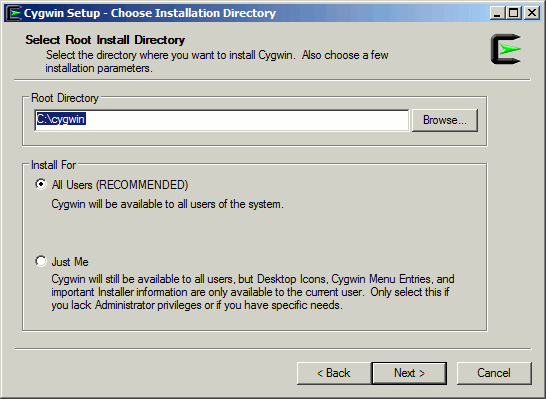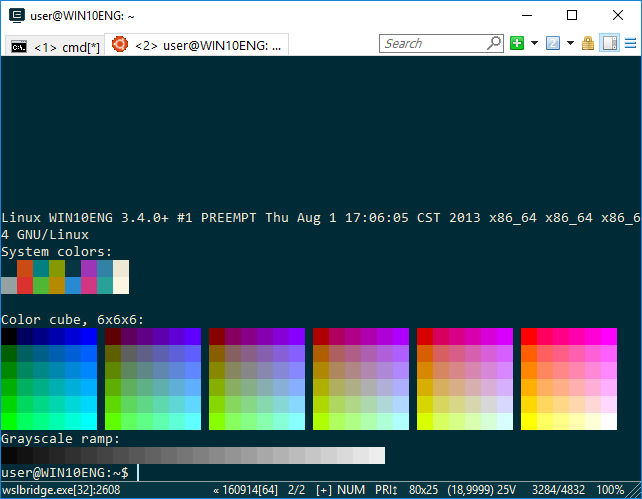

- #Babun with existing cygwin installation install
- #Babun with existing cygwin installation windows 10
- #Babun with existing cygwin installation code
- #Babun with existing cygwin installation Pc
They are also free of the problems caused by the Windows backward slash separator for pathnames. For example, the Cygwin versions of these languages have access to POSIX subsystem calls not available on regular Windows, such as fork(), which Cygwin implements. These are different versions than the official Windows versions of these languages, as they have been compiled as Unix tools. Python 2.7 and 3.4 are available, and so are Ruby and Perl. Several scripting language interpreters have been ported and have a Cygwin version. If you want to see what packages are available, here is the complete list of ported applications.
#Babun with existing cygwin installation code
The gcc suite of compilers is also ported, so if you come across a Unix based application in source code form, you have a good chance of being able to compile it and run it on your PC, exactly like you would on Linux or OS X. The list of ported applications includes the most common Unix shells, bash and zsh, so you can replace your Windows prompt with a Unix-like console window.
#Babun with existing cygwin installation install
What does this mean? It basically means that you can install and use hundreds of Unix utilities on your Windows PC. According to their own description, Cygwin "is a large collection of GNU and Open Source tools which provide functionality similar to a Linux distribution on Windows", and "a DLL (cygwin1.dll) which provides substantial POSIX API functionality". It was already a well established project when I was introduced to it in 2005. What is Cygwin?Ĭygwin is an open source project that has been around for a very long time. The goal of this article is to introduce you to a third option that does not have the disadvantages of the first two: the open source project Cygwin. This is a very good alternative, but it costs money. You can then use putty, an awesome remote shell client for Windows, to open a remote console and work on your cloud server from the comfort of your own PC. Sadly, for many PCs this option may be too resource intensive and result in a poor user experience.Īnother good option is to rent a cloud server and provision it with the Linux distribution of your choice.
#Babun with existing cygwin installation Pc
This is a great option if your have a PC with lots of RAM, because you can set up a decent VM for Linux and leave enough RAM for the Windows side to remain usable. The most obvious is to create a virtual machine using VirtualBox and install your favorite Linux distribution in it. Not the type of terminal window you associate with Windows, right? Unix on Windows: What Are Your Optionsįortunately, as a developer on a Windows machine, you have a few options to create a Unix friendly environment appropriate for open source work. There you can see I have three independent very Unixy-looking console sessions.
#Babun with existing cygwin installation windows 10
The image above is a screenshot of my terminal, running on Windows 10 (click on it to see it in its actual dimensions). This project allows me to work on my open source projects on the PC, using the same tools I use on the Mac, or on a Linux PC.

In this article I'm going to introduce you to the open source project that I use to bridge the gap between Windows and the Unix world. I mostly work on a Mac computer these days, but I own and regularly use a Windows PC as well. If you are looking for tutorials online on any open source related topic and happen to be on a Windows PC, you are going to have a lot of trouble in finding material that does not assume you are on a Linux or Mac system with access to Unix-based tools. Microsoft Windows has long been considered a subpar platform for web development not based on a Microsoft technology, or in more general terms, for any kind of open source work.


 0 kommentar(er)
0 kommentar(er)
